Europe's Charm: 8 Reasons to Explore Shoulder Seasons
Embrace Affordable Travel and Take a Deep Dive into Cultural Immersion
By Volker Poelzl
Updated 3/2/2024 by Transitions Abroad
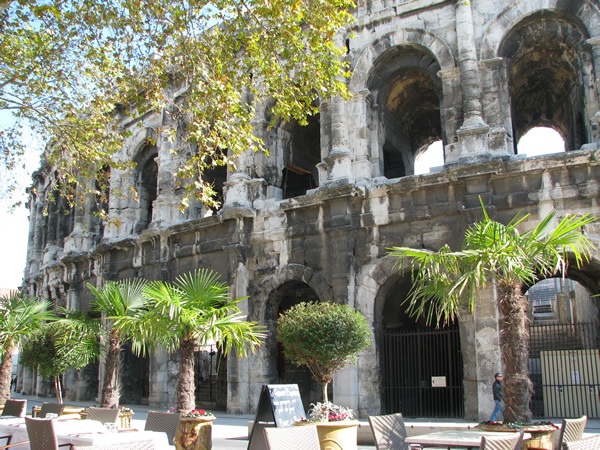
|
|
Beautiful towns in the south of France, such as Nimes, offer outdoor restaurants and cafes serving great food as late as November in front of intact ancient Roman colosseums or in town squares.
Photo ©Transitions Abroad.
|
Traveling to Europe during the warm summer months offers various advantages, such as longer daylight hours and the opportunity for outdoor activities. The continent comes alive with cultural, music, and art festivals in every corner. However, it also comes with some significant drawbacks: expensive airline tickets, crowded trains, fully booked hotels, high living costs, a prevalence of tourists over locals, and increasingly scorching temperatures in some regions that can hinder your enjoyment.
No matter where you go, you'll encounter large crowds during the high season, even in supposedly off-the-beaten-path destinations. Tourists seem to have explored every nook and cranny. If you desire a less crowded and more budget-friendly European experience, consider planning your visit during the shoulder seasons, like spring or fall. During these periods, fewer tourists linger, and most have returned home. Prices tend to normalize, no longer inflated due to mass tourism or overtourism. This allows you to savor a more intimate and authentic journey, with opportunities for genuine interactions with locals and a deeper immersion in culture and daily life. Plus, you'll likely be warmly welcomed by residents who appreciate the relief from the high-season tourist rush, which has led some cities to impose visitor limits or extra fees on famous attractions.
1. Discover the Art of Unveiling the Secrets of Shoulder Seasons
in Europe
When it comes to finding the sweet spot for your European travels, it's all about timing. Imagine bustling summer streets giving way to tranquil mountain hideaways in winter, or charming Italian villages still basking in mild October sunshine. Shoulder seasons hold the key to unveiling a world of travel possibilities.
While summer reigns as the main act for European tourism, the shoulder seasons offer magical and affordable alternatives. Dive into a journey through Europe's shifting seasons, from autumn hikes in northern Italy to truffle hunting, wine tasting, and the art of leisurely exploration.
But beware, not all destinations yet embrace the shoulder season with open arms. Some remain in hibernation until the first whispers of summer. So, if you're contemplating a winter escape to Europe, prepare for a journey to unearth the many secret but open attractions and discover climates that promise an enjoyable experience.
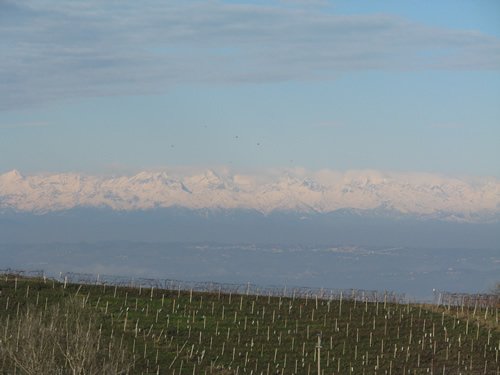
|
|
Shoulder season travel in the Piemonte region of Northern Italy in October, when the grapes have just been picked for the finest wines. White and black truffle season is in full swing. In the background, you will find endless rolling hills covered with grape vines and the Italian and Swiss Alps. Photo ©Transitions Abroad.
|
When it comes to exploring Europe's cultural treasures, savvy travelers know that timing is everything. While the shoulder season offers a tantalizing taste of tranquility, it's important to remember that even during these quieter months, Europe has its share of celebrated festivities and holidays that draw crowds and elevate prices — as is likely the case in your home country.
From the magic of Christmas markets to the vibrancy of New Year's celebrations and the exuberance of Mardi Gras, Europe knows how to throw a party. And let's not forget Easter, a time when many regions burst with life. During these occasions, hotels can become pricier, transportation options fill up fast, and cities come alive with tourists.
Imagine spending Holy Week in Paris, surrounded by visitors from around the world. To escape the crowds, I ventured to Chartres to explore the stunning Gothic cathedral, finding solace in its serene beauty.
Similarly, Tuscany and other Italian gems dazzle over Easter, attracting both worshippers and sun-seekers. Keep in mind that regional holidays can also catch you by surprise, causing a sudden influx of visitors. For instance, Lisbon in early December may seem like the ideal shoulder-season escape, but the holiday of the Immaculate Conception on December 8 turns it into a hotspot for Spanish vacationers, enjoying their 3-day weekend in the Portuguese capital.
To ensure your travels align with your desires, take a moment to research local festivals and holidays before you embark on your European adventure. Dive into guidebooks, explore festival websites, or visit the local tourist office's website for insights into any significant celebrations happening during your visit. Whether you choose to embrace the festivities or seek quieter moments, our guide will help you make the most of Europe's enchanting shoulder seasons."
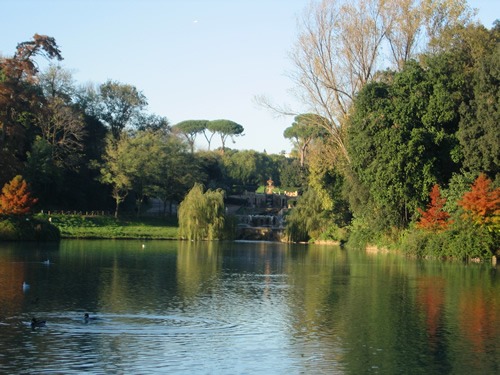
|
|
Fall at the Gianiculo Park in Rome above the Trastevere neighborhood.
Photo ©Transitions Abroad.
|
2. Exploring Europe's Hidden Fall Treasures: Festivals, Culture, and Connection
As summer festivals in Europe wind down around mid-September, there's a special chance for travelers who are curious about culture. If you venture away from the busy cities and head to the quieter countryside and medieval towns, you'll find a variety of smaller festivals worth experiencing.
Journey into the world of local wine and harvest festivals, where the rich traditions of winemaking and bountiful harvests are now an important ritual. Immerse yourself in small-scale cultural celebrations steeped in the region's history, music, art, handicrafts, and culinary delights. These festivals are a vibrant fusion of secular and sacred, pagan and monotheistic influences, resulting in fascinating and one-of-a-kind experiences.
The largely local attendance makes these gatherings unique, providing a special opportunity to engage with the community. Brush up on a bit of the local language and delve into meaningful, often humorous, and good-humored conversations about their culture and way of life. Prepare to be transported back in time through compelling and colorful ritual re-enactments that breathe life into ancient traditions.
Here you can set off on journeys beyond the ordinary, exploring the hidden treasures of Europe's fall festivals, where culture, connection, and discovery await.
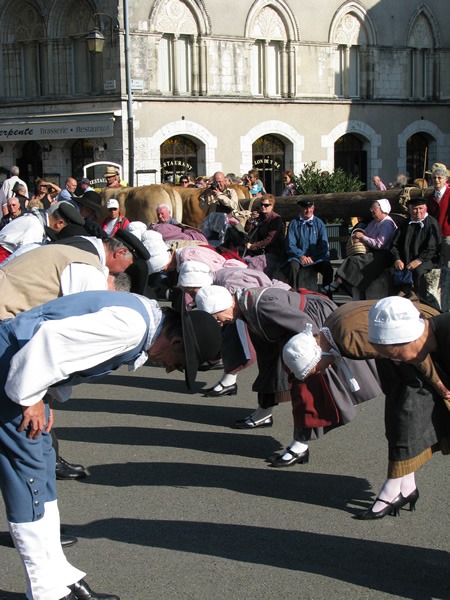
|
|
Small local festivals, often harvest festivals, are among the main attractions of shoulder season travel. Photo ©Transitions Abroad.
|
3. Local Fairs and Markets
Fairs and markets are a satisfying way to immerse yourself in the local culture. Suppose you've ever experienced a bustling summer farmer's market in Provence, France. You may have noticed it's often teeming with tourists in that case. However, if you visit the same market in the spring or fall, you'll find it predominantly frequented by locals. Witnessing the town's residents gather on market day to shop for groceries and exchange greetings with farmers, butchers, bakers, and cheese vendors is an enchanting experience. Exploring art fairs and flea markets during the shoulder season offers a pleasant atmosphere and fantastic bargains.
4. Enhance Your Sightseeing Experience in the Shoulder Season
A journey through Europe typically involves exploring iconic landmarks, museums, and other renowned tourist spots. However, the sheer volume of visitors during the high season can sometimes detract from the overall experience. Opting for a trip during the shoulder season allows you to escape the drawbacks of overcrowded tourism. Imagine having a museum curator dedicate an entire hour to discussing Gothic art in northern Italy with you, as I was lucky to experience. This level of personal engagement is more likely when you're the sole visitor, providing an opportunity for a profound appreciation of medieval art shared by an enthusiastic expert.
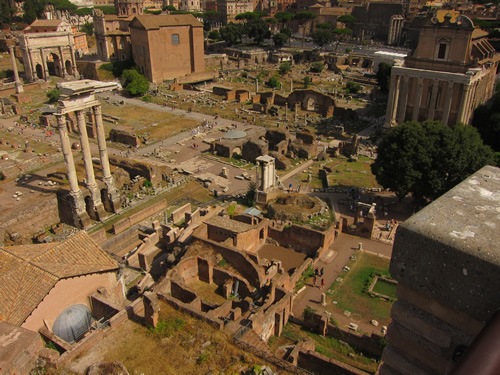
|
|
The Roman Forum during the shoulder season is often almost tourist-free, unlike the massive crowds roaming in truly oppressive heat during the peak summer months.
Photo ©Transitions Abroad.
|
5. Affordable Accommodations Abound
In the peak tourist season, hotel rooms can be snapped up quickly, leaving latecomers scrambling for a place to stay. However, securing a budget-friendly and comfortable hotel is often a breeze during the shoulder season, whether you book online or arrive later in the day. In smaller towns, locals may approach you at railway or bus stations, extending invitations to their cozy pensions, guesthouses, or charming bed and breakfasts. Expect a warmer and more personalized service at hotels and restaurants with fewer patrons. With lower prices, you can easily score an affordable hotel in the heart of a town or city. This opportunity might be out of reach during the summer rush. Staying in a historic city center can provide an exceptional experience, as it makes exploring nearby attractions on foot a breeze. Moreover, many vacation home rentals are available at off-peak rates, perfect for those looking to stay in one place longer and enjoy more space, including a kitchen for cooking up local market finds.
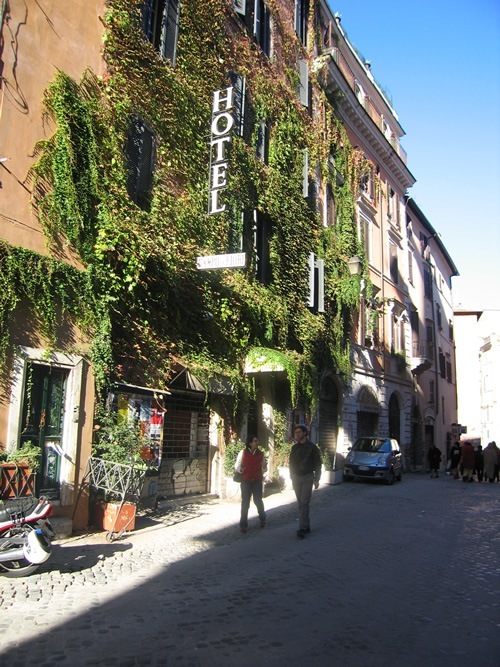
|
|
Hotels in Rome in the fall are often relatively cheap and vacant during the shoulder season.
Photo ©Transitions Abroad.
|
6. Enjoy Spacious Journeys
Regarding European public transportation, the summer months usually witness a surge in travelers. With kids and university students on vacation, it feels like everyone is on the move. However, the downside of spontaneous and unplanned summer travel in Europe is that the otherwise very comfortable and modern trains and buses often burst at the seams. I vividly recall an overnight train journey from Austria to Italy a few years back when the train corridors were crammed with travelers who couldn't secure a seat. I was perched in the narrow luggage rack high above fellow passengers huddled on the floor! This is precisely why spring and fall offer a much more enjoyable experience for train and bus travel. During the shoulder season, finding a seat is a breeze, even on trains that don't require seat reservations.
7. More Authentic Local Experiences
Growing up in one of Europe's renowned tourist hotspots (Salzburg, Austria), I've learned that locals often steer clear of the areas inundated with thousands of tourists daily. Opting for the shoulder season allows you to truly immerse yourself in local life, particularly in smaller towns and cities. I remember visiting a flamenco bar in Seville during January a few years ago, and it was an intimate gathering of locals and a handful of international students. I engaged in vibrant conversations with the friendly locals. I joined them for a lively night that stretched into the early hours.
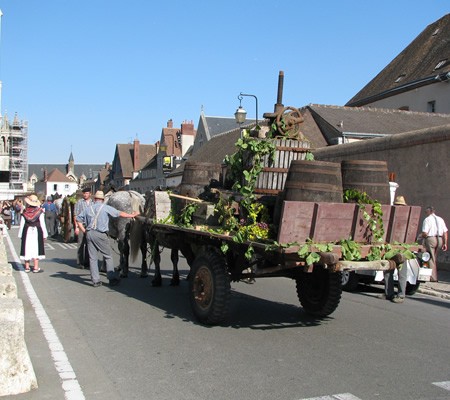
|
|
In the fall, local wine harvest and wine-tasting festivals attract visitors to small European towns. This wine harvest festival, which caught us totally by surprise, takes place each year in front of the magnificent Chartres Cathedral. Photo ©Transitions Abroad.
|
8. A Chance to Rediscover Your Favorite Destinations
Based on my own experiences over the years, I have compiled a short list of my favorite shoulder season destinations in Europe that most can manage on a savvy budget:
Amsterdam's Queen's Birthday Celebration Festival in April
Enjoy the Queen's Birthday Celebration (Koninginnedag), a giant street festival held all over the city on April 30.
October Adventure in the Alps
If you're a mountain enthusiast who loves hiking, early fall offers the best weather to explore the breathtaking Alps. With children back in school, you'll share the stunning peaks with enthusiastic local hikers.
May Getaway to the Greek Islands
Embrace the beauty of Greece in early spring, a perfect season for a tranquil escape. Enjoy pleasant weather, serene beaches, and the warm company of welcoming locals on less crowded islands, typically bustling with tourists.
Provence Delights in September
Southern France's enchanting Provence region beckons in September. As the summer crowds disperse, you can savor the return of local life, relishing a leisurely and authentic immersion in the region's rich culture and natural splendor — often with spectacular views.
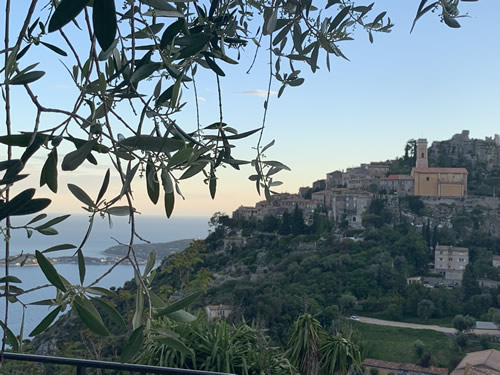
|
|
Early May, a view of the ancient village of Eze overlooking the French Riviera in southern Provence.
Photo ©Transitions Abroad.
|
Tuscany Awakens in Spring
After the Easter festivities, Tuscany slips into a quieter rhythm, making it an ideal time for travel. The landscape flourishes with lush greenery, trees, and flowers burst into bloom, markets bustle with affordable culinary delights for budget-conscious travelers, and cities and towns reveal their authentic charm without the usual tourist crowds. It's a season when you can truly immerse yourself in the bella figura, the Italian pride of presenting a respectable appearance in daily life, away from the casual tourist attire that can sometimes stand out.
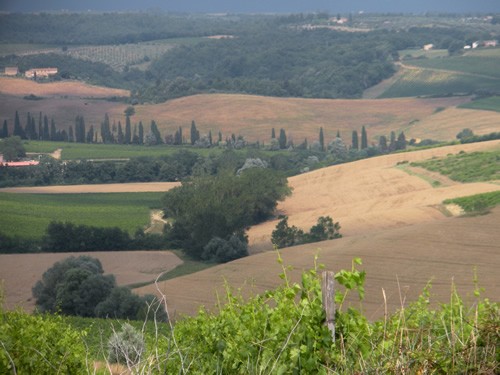
|
|
Tuscan landscape in late spring.
Photo ©Transitions Abroad.
|
Algarve is a Hidden Gem in February
While Portugal's Algarve is renowned for its stunning beaches, late winter and early spring unveil a different charm for those seeking magnificent landscapes and culture. Almond trees burst into bloom, and the region's historic treasures are delightfully devoid of crowds. In the winter, popular tourist hotspots transform into serene fishing villages, offering an authentic glimpse into local life and time-honored traditions.
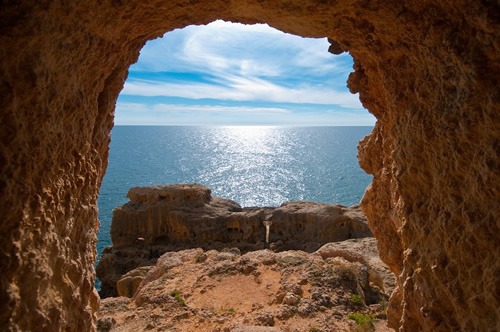
|
|
Portugal's beautiful southern coast has few visitors in the winter.
|
Andalusia's Winter Charm
While Southern Spain may witness occasional cold snaps, the winter season typically offers pleasant weather. It's an ideal time to explore the region's extremely rich cultural and historical tradition, including the awe-inspiring Alhambra in Granada, the majestic Alcázar Royal Palace in Sevilla, and the historic heart of Córdoba. Andalusia's enchantment knows no bounds year-round, and indulging in tapas and local wine is a budget-friendly delight during this season.
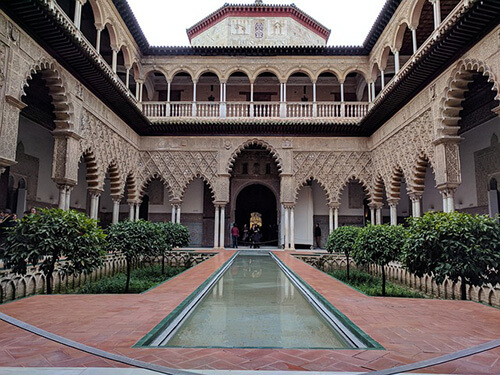
|
|
A courtyard in the huge Alcázar Royal Palace in beautiful Sevilla, Spain is a revelation during the shoulder season or Winter.
|
If you're looking for a more immersive, budget-friendly European adventure, the shoulder season is your best bet. Say goodbye to the tourist hordes and hello to authentic experiences in some of the world's most iconic destinations. It's time to rethink your travel calendar and savor Europe at its finest!
Volker Poelzl is a Living Abroad Contributing Editor for TransitionsAbroad.com. He has extensively traveled in Europe, mostly during the shoulder season.
|
